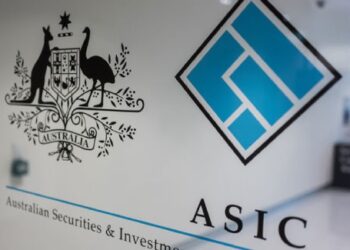Anthony Cullen, senior SMSF educator for Accurium, said that in the legislation’s explanatory memorandum, there is an example that highlights that an individual’s 30 June 2025 total super balance is potentially as important as their 30 June 2026 TSB, especially if it exceeds the Division 296 “large super balance” threshold.
He said the example relates to “Jamal”, who had a TSB on 30 June 2025 of $3.2 million that decreased to $2.8 million on 30 June 2026. He has no contributions or withdrawals for the year and the decrease in his TSB has come about due to negative earnings.
“Based on the application of the proposed law, $200,000 of the decrease is identified as ‘unapplied negative earnings’ that can be carried forward to be offset against future gains,” Cullen said.
“This example also highlights that where the 30 June 2025 TSB does exceed $3 million, a 30 June 2026 TSB below the threshold should not be ignored.”
Cullen continued that this raises a question about the advantage of using the strategy of taking benefit payments to reduce the TSB if they are going to be added back anyway.
Using Jamal again as an example, who had a TSB of $3.2 million on 30 June 2025, and $2.8 million on 30 June 2026, he added in the fact that Jamal also took a benefit payment of $500,000 during the year.
“The proposed legislation states that we need to determine Jamal’s ‘earnings’ by subtracting his prior year TSB from his current year adjusted TSB. His adjusted TSB is determined by applying the following formula: End of year TSB + withdrawals for the year – contributions for the year,” he said.
“For Jamal, this would be $2.8 million + $500,000 – $0 = $3.3 million. His earnings would then be $3.3 million (adjusted TSB at end of current year) – $3.2 million (prior TSB from end of previous year) = $100,000. So why attempt to find unapplied negative earnings if it runs the risk of uncovering positive earnings that will then be subject to Div 296 tax?”
He explained that where the TSB is below $3 million, individuals don’t need to risk having positive earnings subject to the tax and although it may be determined that an individual has positive earnings, that is only one step in the process of calculating the Div 296 tax.
“Once you have determined that there are positive earnings, the next step is to determine the portion of the individual’s interest that exceeds $3 million,” he said.
“The formula for doing so is [(End of year TSB – large super balance threshold i.e. $3 million) / End of year TSB] x 100.”
He added that it is important to note this formula uses an individual’s actual TSB and not their adjusted TSB used to determine their Div 296 superannuation earnings and, for Jamal, the dollar value proportion above $3 million is nil, which will in turn not result in a positive proportion above $3 million.
He said for the next step in the Div 296 calculation process, to determine the taxable superannuation earnings that will be subject to Div 296 tax, an individual must have a positive proportion above $3 million.
“This is highlighted in the example, if we consider that taxable superannuation earning is determined by multiplying the earnings calculated in the first step above ($100,000) by the percentage worked out in the second step (less than or equal to nil) = nil,” Cullen said.



Thank you. Something else to watch out for…
Also, to anyone who thinks that they will never be caught up in this – I had a TSB below $3m in my 50s just 6 years ago. Fast forward and I now have 3 times that amount in mostly unrealised capital gains. Happy problem you might say, but not when I will need to sell off assets that were purchased to create retirement income (I hope to never have to rely on a government pension), just so that I can pay the tax on the unrealised capital gains.
Talk about a non-aspirational government. No congratulations for not being a burden and for wanting to help others less fortunate. No. Just hit us over the head a bit more because somehow we deserve that instead.
I read an article recently by someone earning over $550k a year, wanting to pay NIL tax. The journalist replied that tax evasion was illegal and there was no way for this to eventuate as someone was required to pay the taxes to keep this country going. I beg to differ. There is a perfectly legal way to pay no tax and actually be paid to do so! Simply, quit the job that brings in $500kpa, and the government will actually pay you a pension to not work! The issue is that too many people like the ones that will be affected by this Div 296 if it comes to fruition, do not want government support and are willing to help others with our hard-earned taxes (what we would consider to be “fair” taxes), Just stop stacking the system against us.
I am selling my business and getting out of the rat race and talking all of my money out of super. I want full control now and am sick of forever changing superannuation rules and being made out to somehow have grown these funds in ill-gotten ways. There is far too much red tape in superannuation and it is going to become infinitely worse if this is passed in parliament.
This government is going too far and this is where I get off to control my own destiny.